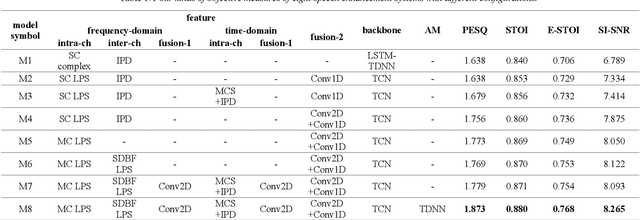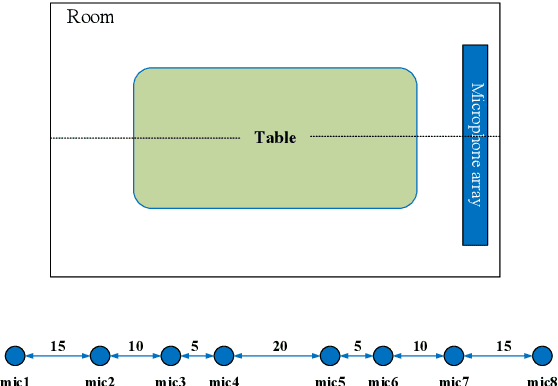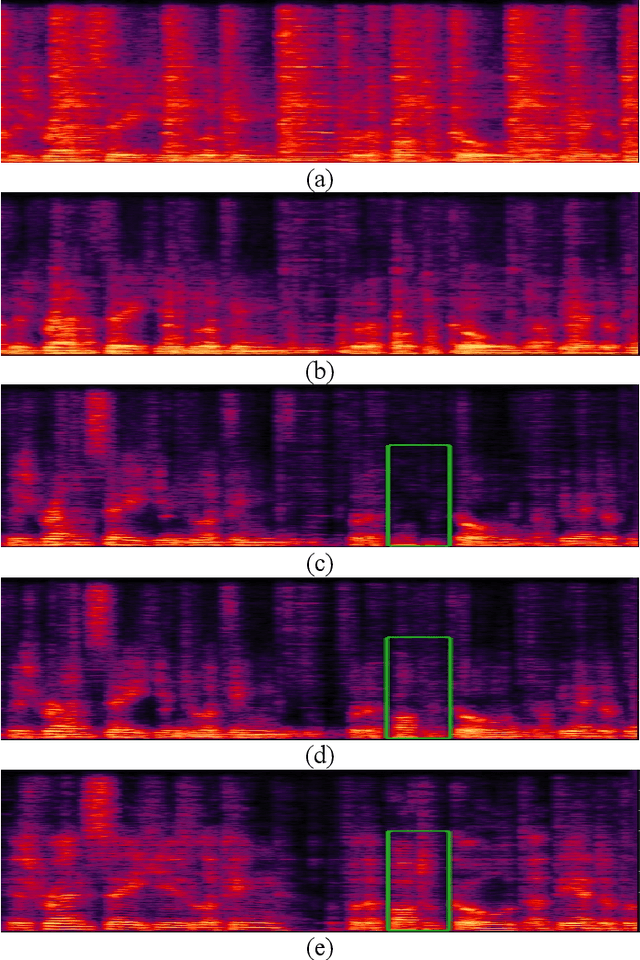Weiji Zhuang
Optimizing Dysarthria Wake-Up Word Spotting: An End-to-End Approach for SLT 2024 LRDWWS Challenge
Sep 16, 2024Abstract:Speech has emerged as a widely embraced user interface across diverse applications. However, for individuals with dysarthria, the inherent variability in their speech poses significant challenges. This paper presents an end-to-end Pretrain-based Dual-filter Dysarthria Wake-up word Spotting (PD-DWS) system for the SLT 2024 Low-Resource Dysarthria Wake-Up Word Spotting Challenge. Specifically, our system improves performance from two key perspectives: audio modeling and dual-filter strategy. For audio modeling, we propose an innovative 2branch-d2v2 model based on the pre-trained data2vec2 (d2v2), which can simultaneously model automatic speech recognition (ASR) and wake-up word spotting (WWS) tasks through a unified multi-task finetuning paradigm. Additionally, a dual-filter strategy is introduced to reduce the false accept rate (FAR) while maintaining the same false reject rate (FRR). Experimental results demonstrate that our PD-DWS system achieves an FAR of 0.00321 and an FRR of 0.005, with a total score of 0.00821 on the test-B eval set, securing first place in the challenge.
Understanding temporally weakly supervised training: A case study for keyword spotting
May 30, 2023Abstract:The currently most prominent algorithm to train keyword spotting (KWS) models with deep neural networks (DNNs) requires strong supervision i.e., precise knowledge of the spoken keyword location in time. Thus, most KWS approaches treat the presence of redundant data, such as noise, within their training set as an obstacle. A common training paradigm to deal with data redundancies is to use temporally weakly supervised learning, which only requires providing labels on a coarse scale. This study explores the limits of DNN training using temporally weak labeling with applications in KWS. We train a simple end-to-end classifier on the common Google Speech Commands dataset with increased difficulty by randomly appending and adding noise to the training dataset. Our results indicate that temporally weak labeling can achieve comparable results to strongly supervised baselines while having a less stringent labeling requirement. In the presence of noise, weakly supervised models are capable to localize and extract target keywords without explicit supervision, leading to a performance increase compared to strongly supervised approaches.
Learning Decoupling Features Through Orthogonality Regularization
Mar 31, 2022



Abstract:Keyword spotting (KWS) and speaker verification (SV) are two important tasks in speech applications. Research shows that the state-of-art KWS and SV models are trained independently using different datasets since they expect to learn distinctive acoustic features. However, humans can distinguish language content and the speaker identity simultaneously. Motivated by this, we believe it is important to explore a method that can effectively extract common features while decoupling task-specific features. Bearing this in mind, a two-branch deep network (KWS branch and SV branch) with the same network structure is developed and a novel decoupling feature learning method is proposed to push up the performance of KWS and SV simultaneously where speaker-invariant keyword representations and keyword-invariant speaker representations are expected respectively. Experiments are conducted on Google Speech Commands Dataset (GSCD). The results demonstrate that the orthogonality regularization helps the network to achieve SOTA EER of 1.31% and 1.87% on KWS and SV, respectively.
Multi-channel Speech Enhancement with 2-D Convolutional Time-frequency Domain Features and a Pre-trained Acoustic Model
Jul 26, 2021



Abstract:We propose a multi-channel speech enhancement approach with a novel two-stage feature fusion method and a pre-trained acoustic model in a multi-task learning paradigm. In the first fusion stage, the time-domain and frequency-domain features are extracted separately. In the time domain, the multi-channel convolution sum (MCS) and the inter-channel convolution differences (ICDs) features are computed and then integrated with a 2-D convolutional layer, while in the frequency domain, the log-power spectra (LPS) features from both original channels and super-directive beamforming outputs are combined with another 2-D convolutional layer. To fully integrate the rich information of multi-channel speech, i.e. time-frequency domain features and the array geometry, we apply a third 2-D convolutional layer in the second stage of fusion to obtain the final convolutional features. Furthermore, we propose to use a fixed clean acoustic model trained with the end-to-end lattice-free maximum mutual information criterion to enforce the enhanced output to have the same distribution as the clean waveform to alleviate the over-estimation problem of the enhancement task and constrain distortion. On the Task1 development dataset of the ConferencingSpeech 2021 challenge, a PESQ improvement of 0.24 and 0.19 is attained compared to the official baseline and a recently proposed multi-channel separation method.
 Add to Chrome
Add to Chrome Add to Firefox
Add to Firefox Add to Edge
Add to Edge